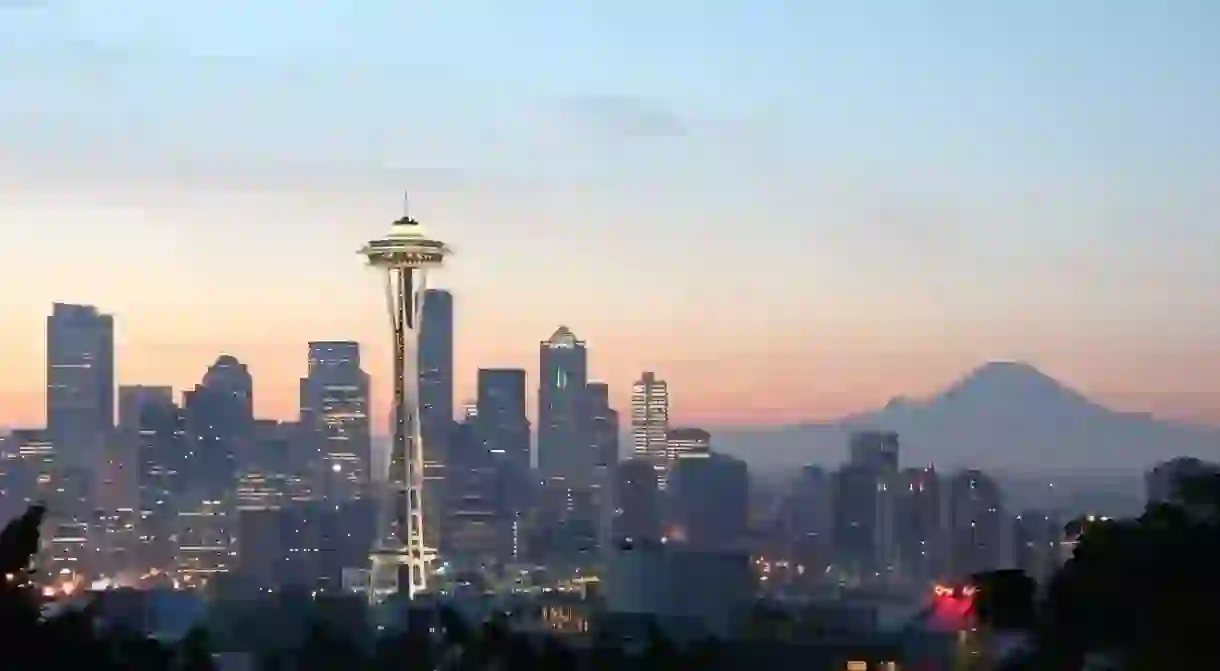The History Of Seattle's Space Needle In 1 Minute

Once the tallest structure west of the Mississippi, Seattle’s Space Needle – the iconic 605-foot-tall observation tower – was built in December of 1961 at the Seattle Center, a park, arts, and entertainment center. Opening on the first day of the World’s Fair on April 21, 1962, the new futuristic tower drew in over 2.3 million visitors. This renowned landmark of the Pacific Northwest was designed by artist Edward E. Carlson, who later went on to become the president of Western International Hotels, and was developed to match the 21st-century theme of the 1962 World’s Fair.
In 1959, Carlson sketched his vision of the 21st-century-style Space Needle on a napkin in a coffee house, inspired by the Stuttgart Tower in Germany; however, when the time came to turn the drawings into reality, Carlson encountered many difficulties bringing the design to life. He went through a series of new designs and alterations, including a balloon-shaped structure. With the help of architect John Graham, who worked with his team of architects to develop a saucer-shaped design, a final blueprint was completed, fusing the two men’s designs; in 1961, a piece of private land was purchased by private investors for $75,000 where the Needle would be built.

Led by the Howard S. Wright Construction Company, construction began on the underground foundation, which took 467 cement trucks to fill over the course of an entire day, the largest continuous concrete pour that has ever been executed in the West. Once completed, the foundation weighed close to 9,550 tons, the same weight as the Space Needle itself, putting the center of gravity at a mere five feet above ground level. The dome was completed shortly after with five levels, including a revolving restaurant and an observation deck – keeping with the futuristic theme, the legs were painted ‘Astronaut White,’ the core ‘Orbital Olive,’ the halo ‘Re-entry Red,’ and the sunburst and roof ‘Galaxy Gold.’ From the observation deck, views of the Olympic and Cascade Mountains are clearly visible along with Mount Rainier, Mount Baker, Elliot Bay, and the surrounding islands – visitors can reach the top of the Space Needle using the elevators, which travel at ten miles per hour.
The Needle, being located in the center of the stormy and mostly rainy Seattle, was built to withstand a wind velocity of 200 miles per hour; however, it has closed occasionally due to storms, including the Columbus Day storm in 1961 and the ‘Inauguration Day’ storm in 1993. It was also built with 25 lightening rods, and can withstand earthquakes up to a 9.1 magnitude – in 2001, an earthquake with a 6.8 magnitude shook the Space Needle, but it was left solely intact. On December 31, 1999, the Legacy Light (or Skybeam) was added to the Space Needle – a powerful beam of light that is used to cast rays of light on the tower in remembrance of national holidays or special occasions. In 1999, the Space Needle was designated a historic landmark by Seattle’s Landmarks Preservation Board.
📅 The Space Needle: 8am-12am daily













